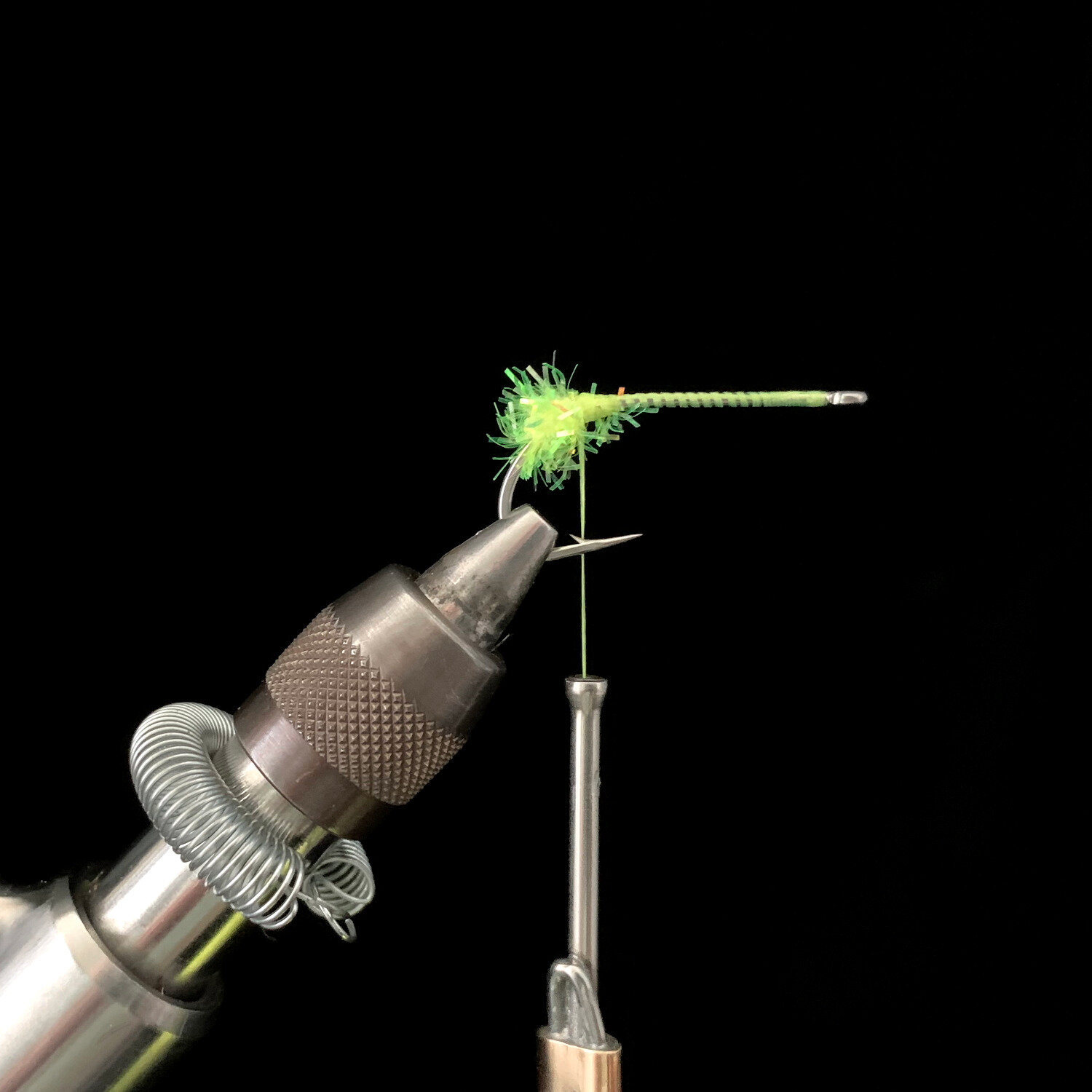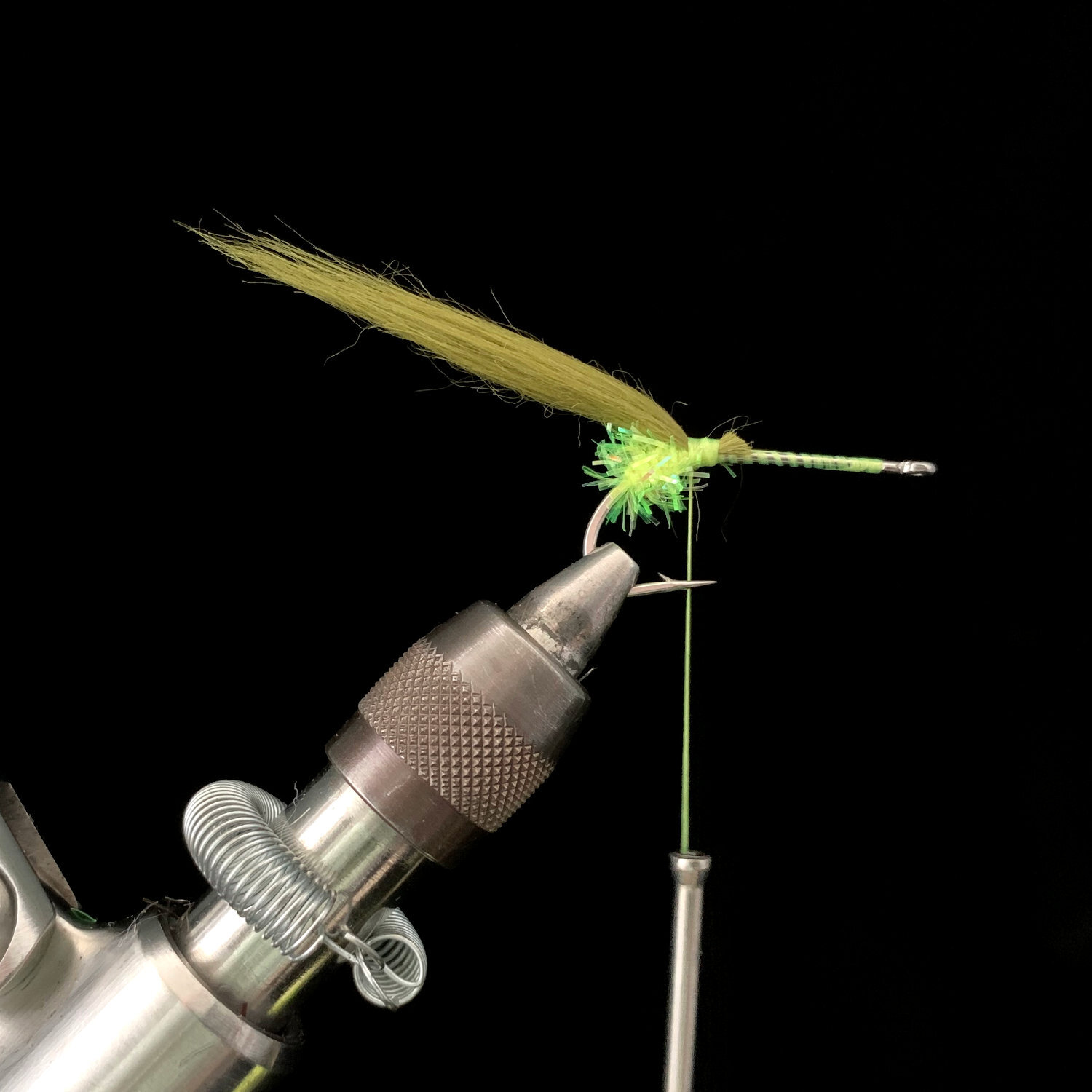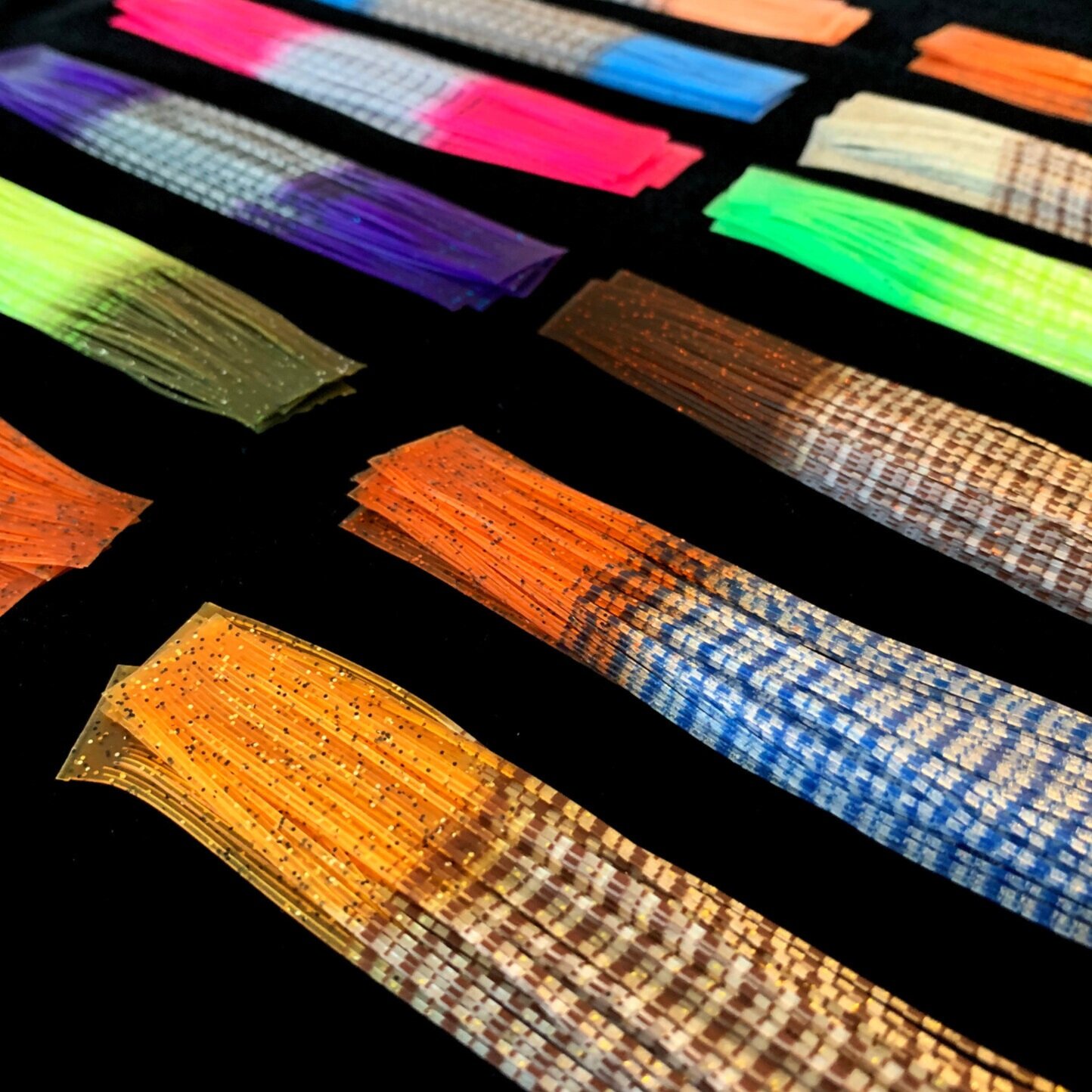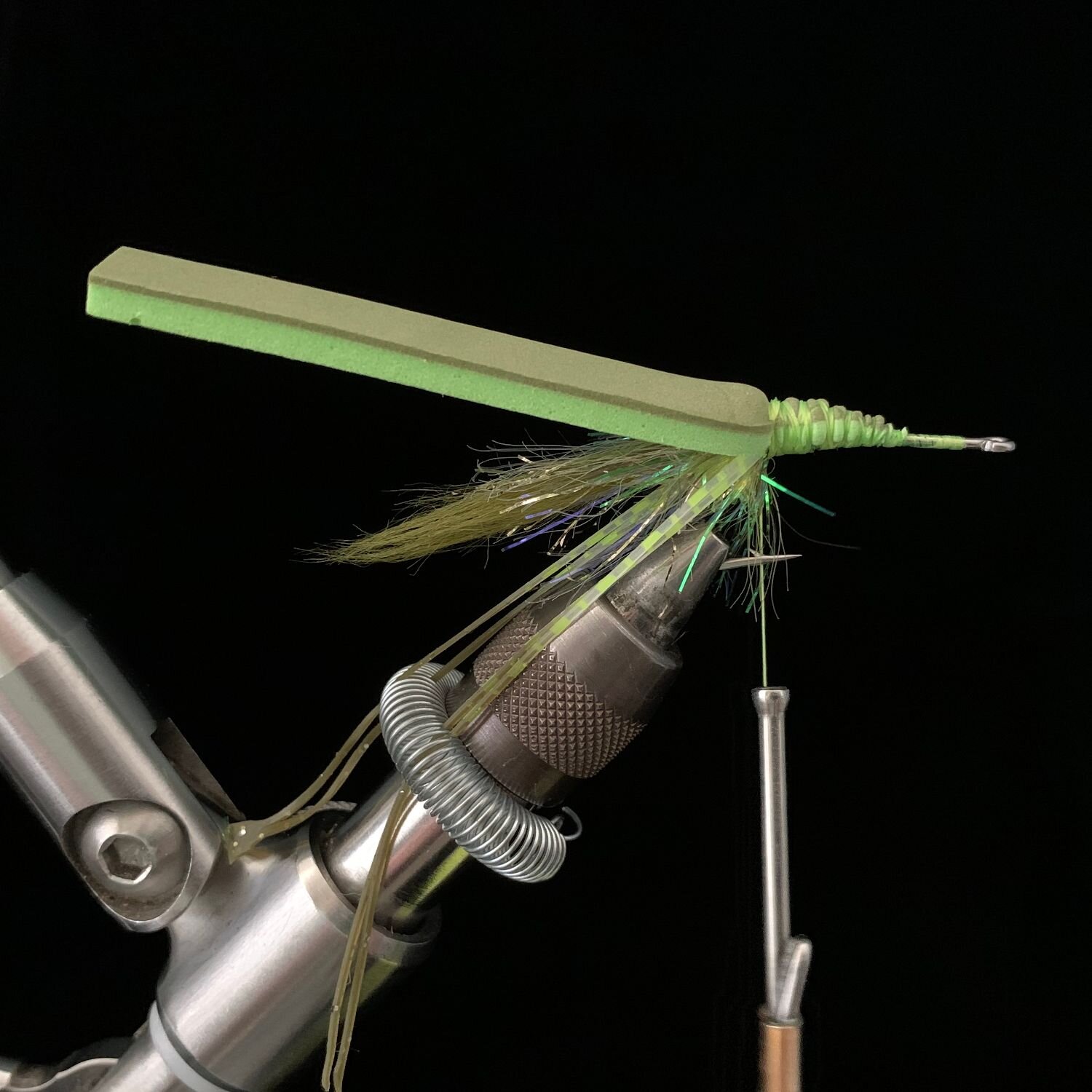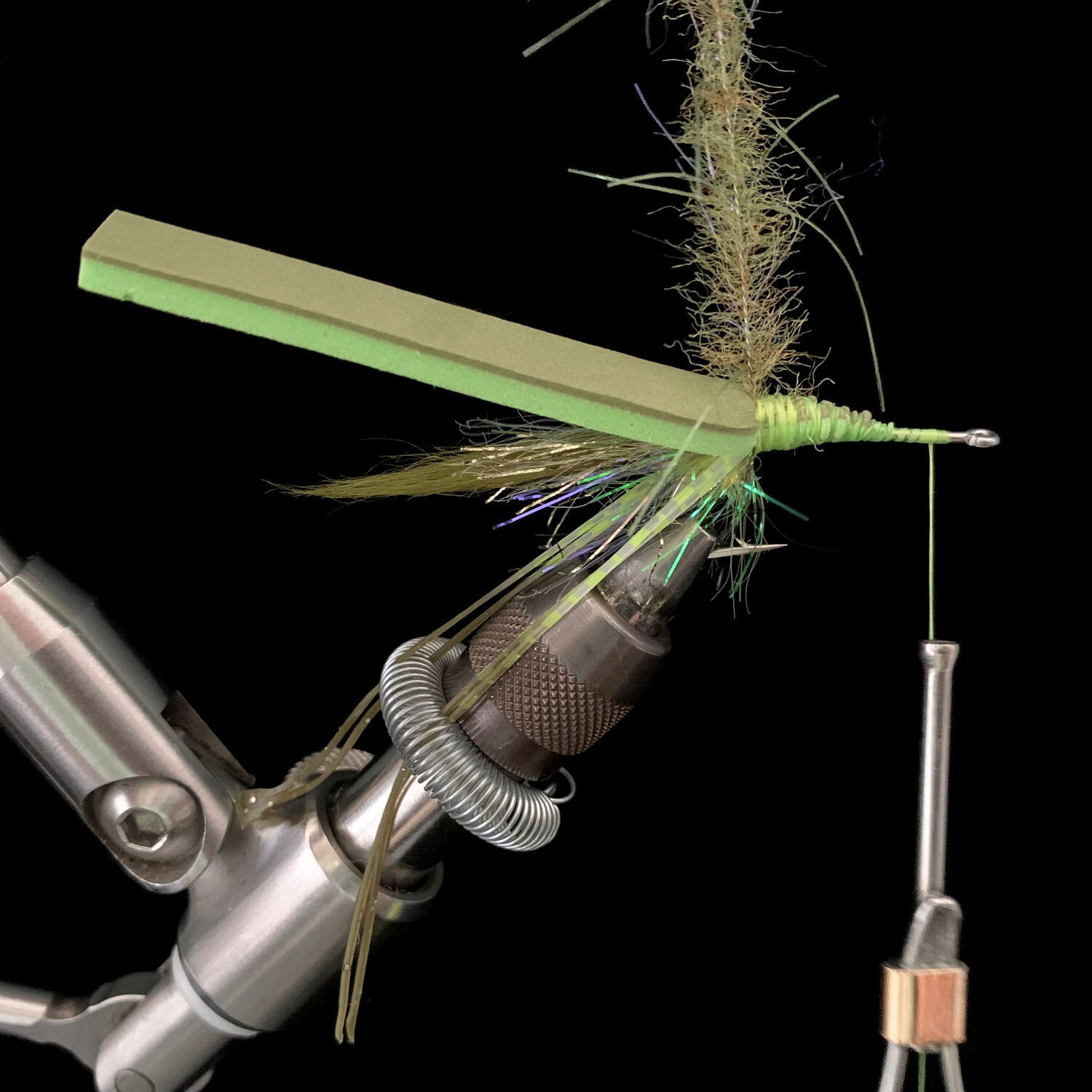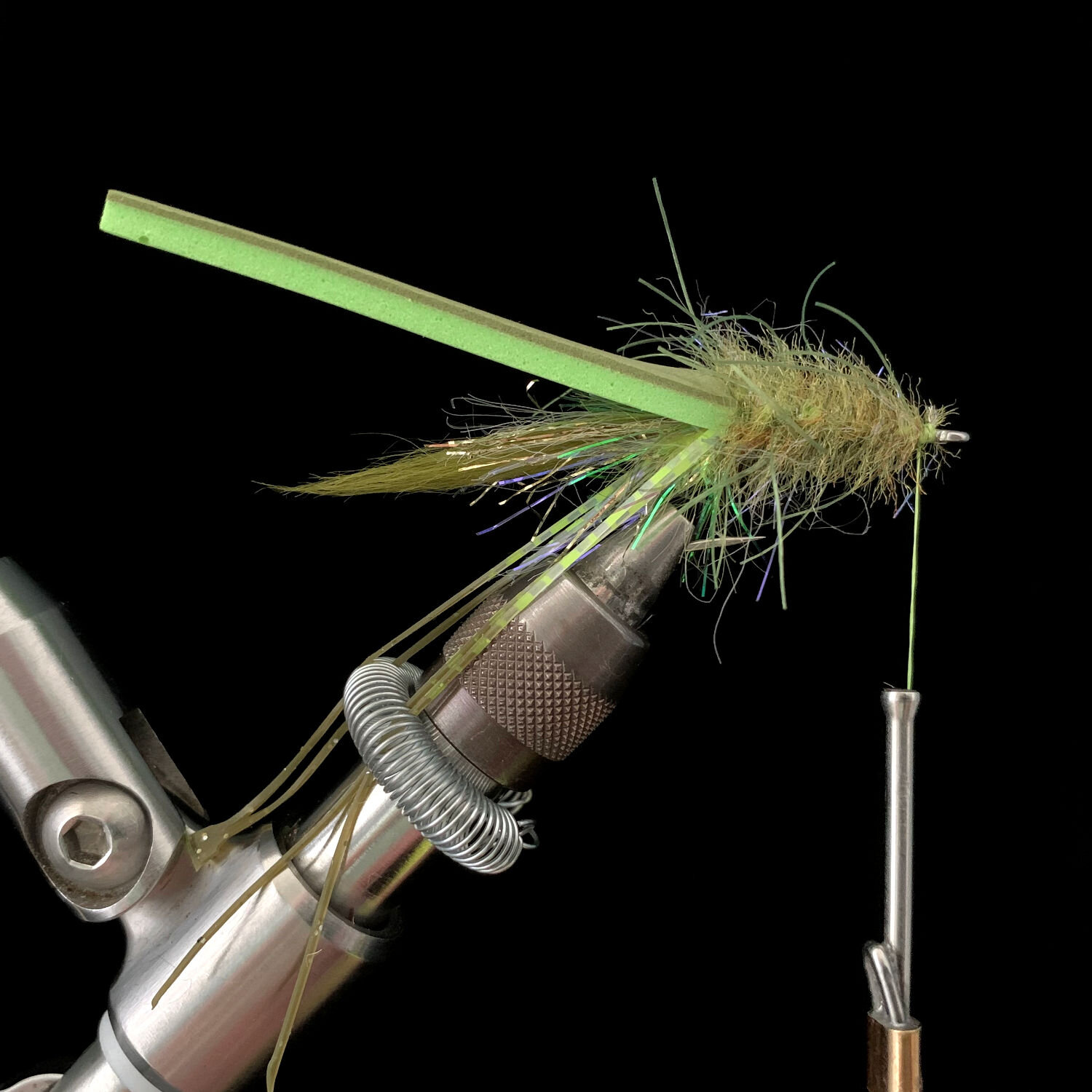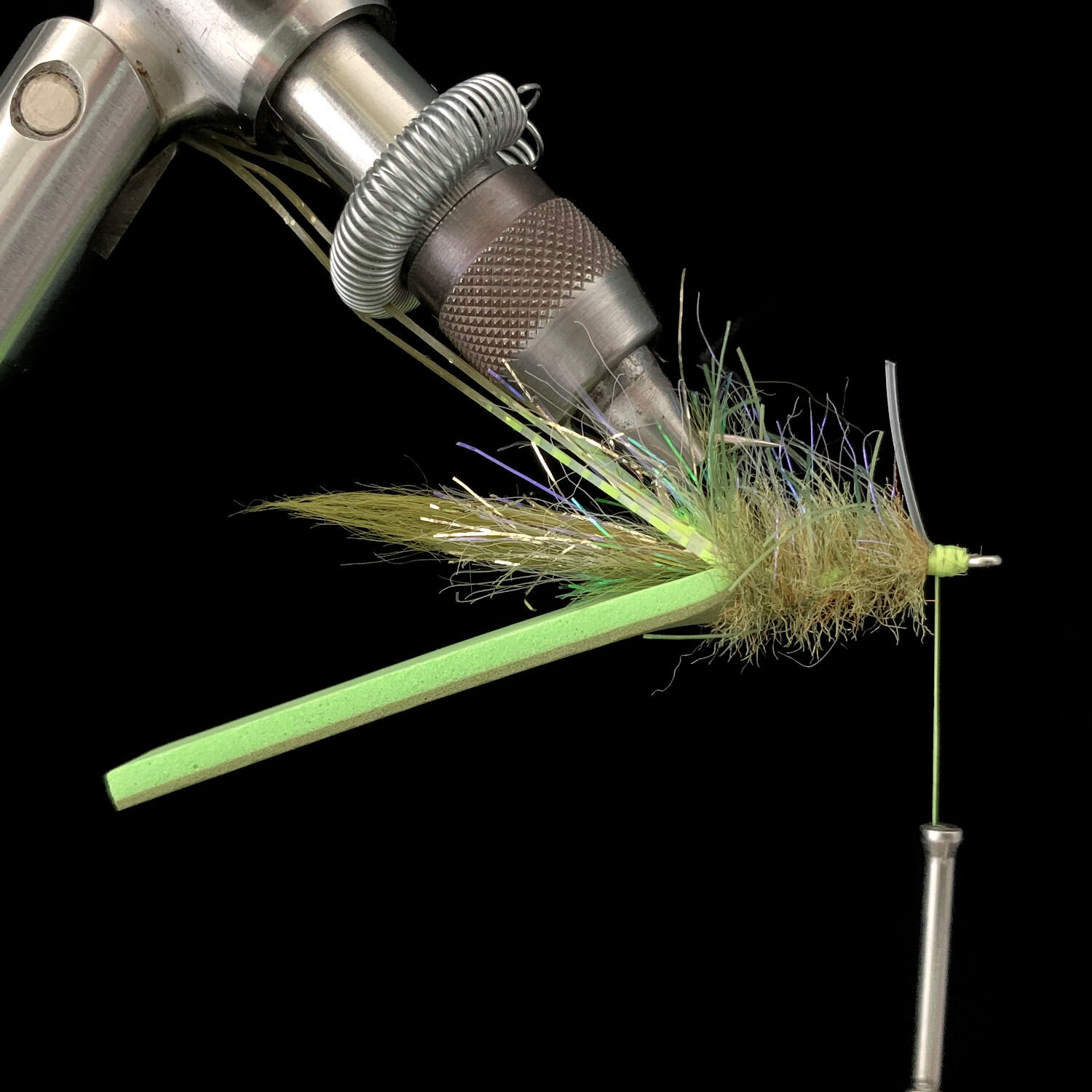How To: Tying Topwater Flies - The Gurgler
Floating on the surface, the Gurgler will pop, splash, and create noise when being retrieved. The posture of this fly is designed to push a lot of water and is superb at grabbing the attention of fish from a distance, in murky water, or when the visibility is low. It’s profile mimics an injured baitfish and will often trigger a natural reaction in fish to eat. Once you get that rush of adrenaline watching fish blow it up out of the water, you'll be tying this fly on again and again.
Lucky for us, this fly is very easy to tie and can be tied in many variations to “match the hatch” of your local waters. From Largemouth Bass to Redfish and Speckled Trout, this fly is highly versatile and can be adapted to fit many situations.
FLY TYING MATERIALS
(scroll down to the bottom to see the color list for three effective color combinations)
Hot Spot: Estaz Petite
Tail Material: Super Fly Fur
Flash 1: Holo-Fiber Wrap
Flash 2: Crack Wrap
Legs: Marsh Legs
Foam: Topwater Fly Foam Strip
Body: EP Wooly Critter Brush
Weedguard: Mason Hard Mono 30#
Thread: SCFC Flat Waxed Nylon
Hook: Size 2 - Daiichi 2546 or Ahrex SA210
HOW TO TIE THE GURGLER FLY
STEP 1:
Start your thread at the eye of the hook and wrap towards the bend. Secure a piece of Estaz Petite at the bend of the hook and wrap approximately 3-4 times. When finished, the Estaz Petite should be level with the top of the hook shank.
This is commonly called a “Hot Spot” or “Egg Sack”. It provides a pop of color and helps keep the tail material propped up to avoid fouling.
Step 2:
Tie in a small amount of Super Fly Fur just in front of the Hot Spot.
The tail length should be approximately 1 3/4” length.
Other materials commonly used for the tail include Craft Fur, Marabou, or a pinch of your favorite Dubbing.
Step 3:
Tie in some Holo-Fiber Wrap at the same location as the previous step. Wrap twice around the hook shank.
Step 4:
Tie in some Crack Wrap, also at the same location as the previous step. Wrap twice around the hook shank.
A single-sided chenille with a stealthy thin internal cord that’s perfect for building bodies, collars, or palmering over the top of other materials.
Step 5:
Push/fold the flash rearward and cover with thread back to the bend of the hook.
Step 6:
Tie in two Marsh Legs. Spread the legs to both sides of the fly. Half on the left side, and half on the right side.
Note the position of the thread as it hangs from the bobbin. After tying in the legs, the thread should be in line with the barb of the hook, or close to it. This is a good measurement of the tie in location for the next step, where the foam strip is tied in.
Marsh Legs
Silicone legs designed specifically for saltwater fly patterns and are the perfect way to add movement, color, and dimension to all your shrimp, crab, baitfish, and crustacean flies.
Step 7:
Prepare and trim the Topwater Fly Foam Strip.
Cut a triangular shape approximately 1/2” in length at the end of one side of the foam strip.
Step 8:
Tie in the 1/2” triangular portion of the foam strip so that the foam is pointing towards the rear as pictured.
If you are using a dual-colored foam strip, be sure to put the color you want shown on top, facing down. You will be folding the foam strip towards the front in the next few steps.
Two colors of high-quality closed cell foam fused together, cut to shape, and placed into a convenient package that’s ready to use on your favorite topwater flies.
Step 9:
Wrap thread tightly over the triangular shape of the foam strip. This will reduce the amount of bulk on the hook shank.
Step 10:
Tie in a section of EP Wooly Critter Brush directly in front of the foam. Wrap the brush approximately 6 times towards the eye of the hook.
Other materials commonly used on the body include Estaz Petite (with a feather palmered on top) or a dubbing loop of your favorite materials.
Step 11:
Secure the brush approximately 1/16” from the eye of hook. This will give you plenty of room to tie in the foam and add in a weedguard.
Use a small brush or Velcro to comb the legs and fibers so that they are pointing downward.
Step 12:
Invert the fly in the vise and tie in a weedguard (30# Mason Hard Mono) at this step if desired.
Step 13:
Fold the foam towards the eye of the hook as pictured. Capture the foam with a few thread wraps to secure.
Also, use some thread wraps in front of foam to support it in an upright position.
Trim the excess foam to approximately 3/8” in length.
Finished:
Complete the fly by trimming the Marsh Legs to the same length as the tail and use some Solarez UV Resin to cover the exposed thread wraps for added durability.
There are many variants of topwater flies, the classic Gurgler is just one example. Other examples include modified Diver variations and Popping Shrimps.
Olive/Chartreuse
Hot Spot: Estaz Petite - Chartreuse
Tail Material: Super Fly Fur - Olive
Flash 1: Holo-Fiber Wrap - Gold
Flash 2: Crack Wrap - Olive
Legs: Marsh Legs - Clear/Chartreuse - Olive Tip
Foam: Topwater Fly Foam Strip - Olive/Chartreuse
Body: EP Wooly Critter Brush - Lt. Grass
Weedguard: Mason Hard Mono 30#
Thread: SCFC Flat Waxed Nylon - Olive
Hook: Size 2 - Daiichi 2546 or Ahrex SA210
Tan/Brown
Hot Spot: Estaz Petite - Orange
Tail Material: Super Fly Fur - Tan
Flash 1: Holo-Fiber Wrap - Gold
Flash 2: Crack Wrap - Tan
Legs: Marsh Legs - Gold/Brown - Orange Tip
Foam: Topwater Fly Foam Strip - Tan/Brown
Body: EP Wooly Critter Brush - Tan
Weedguard: Mason Hard Mono 30#
Thread: SCFC Flat Waxed Nylon - Tan
Hook: Size 2 - Daiichi 2546 or Ahrex SA210
Black/Purple
Hot Spot: Estaz Petite - Purple
Tail Material: Super Fly Fur - Black
Flash 1: Holo-Fiber Wrap - Electric Purple
Flash 2: Crack Wrap - Purple
Legs: Marsh Legs - Clear/Black - Purple Tip
Foam: Topwater Fly Foam Strip - Black/Purple
Body: EP Wooly Critter Brush - Black
Weedguard: Mason Hard Mono 30#
Thread: SCFC Flat Waxed Nylon - Purple
Hook: Size 2 - Daiichi 2546 or Ahrex SA210
Sight Cast Fishing Company
We provide a line of products that are designed for those that live and breathe the shallow flats and backwater marshes. Our passion is saltwater fly fishing and we aim to provide top quality flies and fly tying materials designed for the Gulf Coast fly fisherman. Many of the materials used in this fly are available in the Tying Materials section of the website. You can also purchase this fly and many others that are already tied up and ready to fish in the Fly Shop. Good luck out there on the water!


